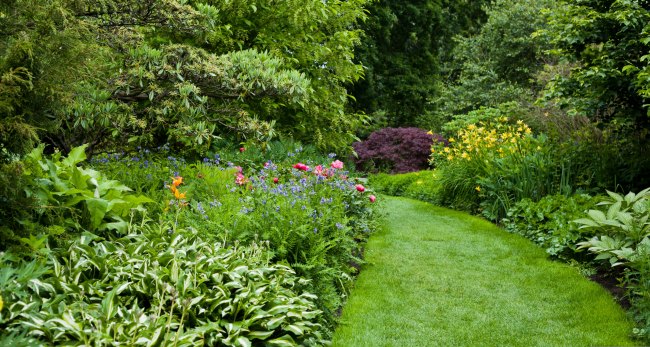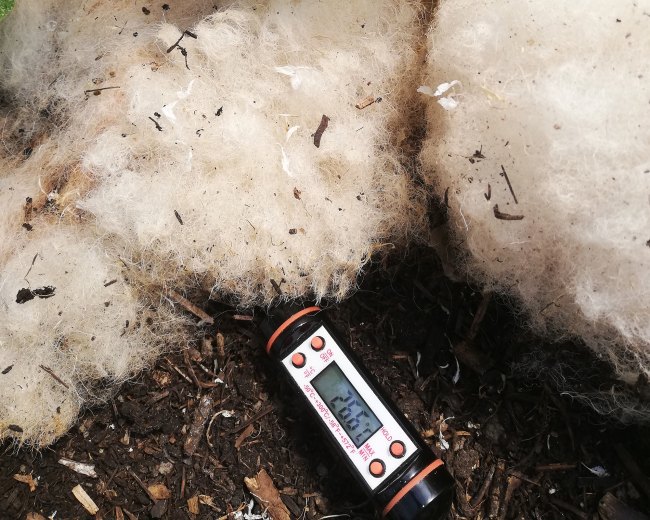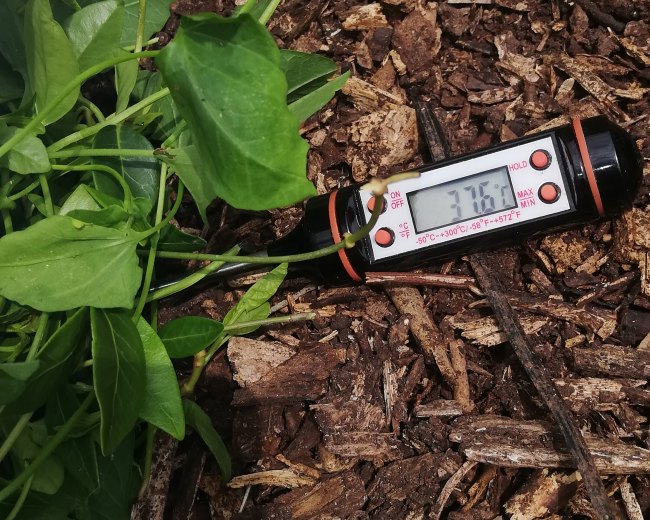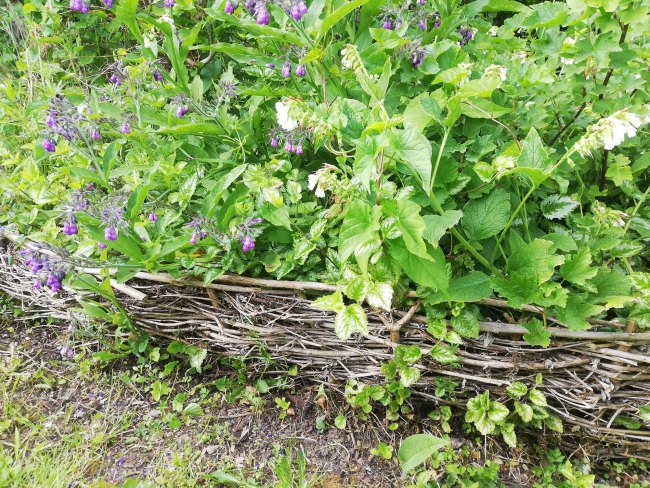Keep plants cool without wasting water
As the weather heats up, gardeners will be reaching for watering cans or hoses. But as horticultural scientist Janet Manning explains, you can help your plants by encouraging their natural ability to cope in hot weather.
Gardeners appreciate any shade in their garden to shelter from the sun. It may seem obvious, but we can move to get out of the sun and pour a cold drink. You can’t do either of those things if you’re a plant and can’t move! It’s fascinating how plants have evolved to learn to live without legs. They are literally rooted to the spot, so have developed natural ways to cope in dry weather. This means as gardeners, we can make the most of nature’s ability to cope with heat, and reduce the need for more watering when the temperature rises.

Plants can help each other

Have you noticed that grass growing close to a tree or hedge is often the last to turn brown? This is because the tree or hedge is taking the heat and shading the soil beneath its canopy. Big plants help small plants when there’s moisture in the soil. The shade from the big plants reduces the evaporation of water from the soil surface, helping the grass stay greener for longer.
Big plants also have deeper and more extensive roots, so can reach water held in much larger and deeper volumes of soil. Furthermore, when the moisture evaporates from the tree’s leaves it cools the surrounding air, further benefiting the nearby grass.
Layered planting creates shade
Gardeners can make use of the shade created by large canopies of foliage, by designing planting in layers, also known as forest planting. This is done with lots of different heights of plants, from trees through to ground cover. Having varying heights of plants creates shade so the soil is never exposed to direct sun. This way the soil surface stays cooler, less water evaporates, and the moisture lasts longer. With different plants having varying root depths, they can draw moisture from different depths of soil, so plants can help each other benefit from all the moisture that’s available.
Create shade for root zones
On the longest day in the UK there is around 16 hours of sunlight. Plants will keep using water and the sunlight for photosynthesis during the long days. But gardeners can reduce the stress for plants and save on watering, by using shade to turn down the sun’s intensity.

Firstly start with shading the soil with an organic mulch, such as wood chip, straw, grass clippings or sheep wool. This will insulate the roots from the radiant heat, keeping moisture in the soil. At home in my own south facing garden, I measured the temperature of dark coloured wood chip mulch using a kitchen thermometer (not a highly scientifically instrument, but good enough). By adding around 30 mm of material, the temperature dropped by 23oC from 45oC on the surface to 22oC underneath! The wood chips drain freely when I do water, so very little water stays in the mulch to evaporate. Sheep wool also makes an excellent mulch. A friend of mine uses this on her allotment and I found temperatures under the wool mulch were lowered by 14oC in a poly tunnel and 16 oC on an outside bed.
This made me curious. After weeding would I be exposing even more soil to the heat of the sun when I take the weeds away to the compost bin? What if I leave them to wilt on the surface instead? It would mean less work for me carrying everything away and less watering if it reduced the temperature further. It worked well, a small pile of loose bindweed left on the mulch surface for only a few minutes took the temperature of the surface of the mulch down by around 8oC.
Secondly, a border edging can also double up as root zone shading. In the photo below you can see I created a simple woven border edge using the woody prunings from a Buddleja. I’m always looking for multiple benefits and this does several jobs:
- it makes use of woody prunings that wouldn’t fit into a bulging compost bin
- it puts decaying wood into the soil which will encourage the mycorrhizal fungi in the soil
- it shades the root zone in the border from the sun
- it also stops my husband strimming my plants when he does the edges of the lawn!

Making the best use of water in the garden saves time and helps grow better plants. Check out our gardening blogs and tips for heaps of information and insight that you’ll be able to use straight away.
